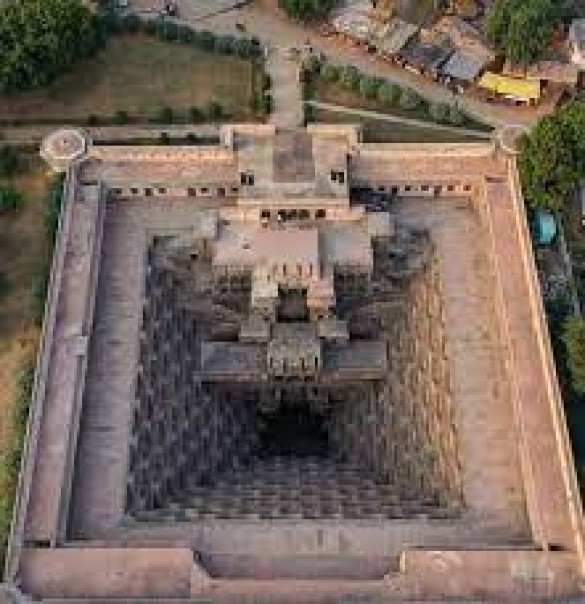
Rani ki Vav, also known as the Queen's Stepwell, is an extraordinary subterranean marvel located in the town of Patan, Gujarat, India. It stands as a testament to the architectural and artistic brilliance of ancient India and has been recognized as a UNESCO World Heritage Site. With its intricate carvings, grand architecture, and historical significance, Rani ki Vav is a remarkable cultural treasure that transports visitors to a bygone era of opulence and ingenuity. Rani ki Vav, the Queen's Stepwell, stands as a timeless testament to the architectural genius and artistic finesse of ancient India. As a subterranean architectural wonder, it continues to captivate visitors with its intricate carvings, spiritual symbolism, and historical significance. Beyond its grandeur, Rani ki Vav represents the ingenuity of human civilization in harnessing natural resources and creating spaces of cultural and spiritual significance.
Rani ki Vav was built during the 11th-century CE by Queen Udayamati, the wife of King Bhimdev I of the Solanki dynasty. The stepwell was not only a utilitarian structure but also a symbol of the queen's devotion and tribute to her deceased husband. It served as a memorial and an intricate work of art that showcased the aesthetic and cultural prowess of the time. The stepwell's architectural brilliance lies in its multi-layered and intricately designed structure. The stepwell is an inverted temple-like structure with seven levels of steps leading down to the water level. Each level features elaborately carved sculptures of Hindu deities, celestial beings, and scenes from epics like the Ramayana and Mahabharata. The carvings, executed with finesse, portray the artistic sensibilities of the era and the devotion of the craftsmen involved. Rani ki Vav not only served as a water storage system but also carried significant spiritual symbolism. The stepwell is an embodiment of the concept of the universe as a cosmic ocean, with the water representing the source of life and spiritual purity. The intricate carvings of gods and goddesses symbolize the union of the divine and the material, creating a sacred space for contemplation and reverence.
Beyond its architectural splendor, Rani ki Vav served a practical purpose as a water management system. In arid regions of India, stepwells played a crucial role in harvesting and storing rainwater during the monsoon season. The well-maintained stepwell provided water throughout the year, ensuring the well-being of the local community and travelers passing through the region. Over the centuries, Rani ki Vav fell into disuse and was gradually buried under silt and debris. It was rediscovered in the 1940s by archaeologists, who embarked on extensive excavations to unveil the hidden gem. Today, the stepwell stands restored and protected, allowing visitors to marvel at its beauty and immerse themselves in its historical significance. In 2014, Rani ki Vav was inscribed as a UNESCO World Heritage Site, garnering international recognition and conservation efforts. The recognition affirmed its cultural importance and contribution to human history, ensuring its preservation for future generations.
The stepwell remains not only a cultural treasure of India but also an inspiration to architects, historians, and admirers of art from across the world. Its story serves as a reminder of the rich heritage and contributions of ancient civilizations and the need to preserve and cherish such invaluable cultural treasures for generations to come.
Also read -Saptarishis: The Seven Sages of Ancient India
Hinduism and Art: An Eternal Journey of Spiritual Expression
The Role of Yoga and Meditation in Hinduism: A Path to Spiritual Awakening